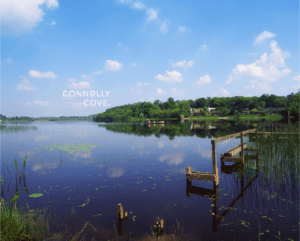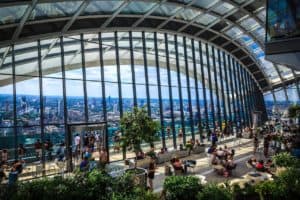The Hidden Trails of the Camino de Santiago: Exploring the Uncharted Pilgrim Routes

Updated On: April 05, 2024 by Yasmin Elwan
The Camino de Santiago, a network of pilgrimage routes leading to the shrine of the apostle Saint James in the cathedral of Santiago de Compostela in Galicia, has captivated the hearts of adventurers for centuries. While the well-trodden French Way garners much attention, an array of hidden trails offers a quieter, albeit equally enriching, passage through Spain’s varied landscapes. These lesser-known paths weave through tranquil countryside, secluded villages, and historic cities, allowing pilgrims to discover the road less travelled, one step at a time.

Embarking on these concealed tracks not only provides an opportunity to evade the crowds but also to delve deeply into the culture and community that pulse along the Camino. From the rustic charms of the Northern routes to the storied passages of the Vía de la Plata from the South, each trail has its unique narrative, scenery, and spiritual significance. Whether it’s traversing the Portuguese route from Lisbon or venturing to the enigmatic shores of Finisterre, these alternative paths invite us to explore, reflect, and connect with Camino’s myriad facets, far beyond the famed French Way.
Historical Context of the Camino de Santiago

The Camino de Santiago, a historic pilgrimage, has been significant since the discovery of what is believed to be the tomb of the Apostle Saint James in the 9th century in the modern-day Cathedral of Santiago de Compostela in northwest Spain. This discovery solidified the city as a key pilgrimage destination.
During the Middle Ages, the route to Santiago de Compostela flourished. It became a beacon, drawing thousands of pilgrims from across Europe. It was an expression of religious devotion and, for many, a journey for absolution. The pilgrimage was considered a spiritually cleansing experience. These travels also facilitated cultural exchange among the different people of the continent.
The routes converged from various starting points, with most traversing rugged landscapes, before culminating at the revered Cathedral de Santiago de Compostela, the final resting place attributed to Saint James. This network of paths is collectively known as the Camino de Santiago.
- Spiritual Significance: The remains of Saint James, an Apostle of Jesus, confer holy status upon the pilgrimage.
- Cultural Impact: The influx of pilgrims over centuries has left an indelible impression on the art, literature, and customs associated with the Camino de Santiago.
In contemporary times, the allure of the Camino is not solely spiritual. It provides an avenue for cultural enrichment and personal reflection. Our collective fascination with these well-trodden trails continues to honour the profound historical legacy of the Camino de Santiago.
Planning Your Journey

When embarking on the Camino de Santiago, meticulous preparation is essential to enhance the experience. We’ll guide you through choosing the right path, what to pack, and accommodation options.
Choosing the Right Path
The Camino de Santiago offers various routes, each with its own unique character. The Original Way is often celebrated as the route with the most historical significance, tracing the steps of a pilgrimage undertaken by King Alfonso II around 820 CE. It spans over 200 miles and is suited for those seeking a path with a rich heritage. It’s important to match the route with your level of fitness and to consider whether you prefer a solitary walk or a more sociable experience. Apps can help with route planning, providing detailed maps and stage breakdowns.
Essential Gear and Preparation
To traverse the Camino, a well-packed backpack is vital. We recommend lightweight and durable gear, with a focus on walking shoes that have been broken in to prevent blisters. Essential items include:
- Quick-dry clothing
- Rain gear
- Sun protection (hat, sunscreen)
- Water bottle
Ensure your physical fitness level is adequate for the journey ahead by training beforehand. Pilgrims often forget to prepare mentally, so consider mindfulness or meditative practices to enhance your pilgrimage.
Accommodation Options
Accommodation varies widely along the Camino, from municipal albergues to private guesthouses. It’s wise to book in advance, particularly during peak pilgrimage season. Consider your budget, desired comfort level, and the experience you wish to have. Santiago itself offers a wide range of options, from the simple to the luxurious, catering to the needs of every pilgrim.
By considering these factors and planning with care, you’ll be well-prepared for the magnificent journey on the Camino de Santiago.
The French Way and Its Alternatives

As we explore the renowned Camino Francés, it’s crucial to note that this well-trodden path is just one facet of a larger mosaic of trails. Here, we unveil some less crowded yet equally mesmerising alternatives.
Camino Francés
The Camino Francés, or the French Way, remains the quintessential choice for many pilgrims journeying to Santiago de Compostela. Traversing the diverse landscapes of northern Spain, it encompasses the picturesque Basque Country before unfolding across the sprawling countryside. This historic route stands as a testament to the cultural melange and the spiritual fabric that the Camino de Santiago has offered to innumerable travellers over the centuries.
Northern Spots Off the Beaten Path
Beyond the frequented lanes of the French Way lie secluded gems tucked away in the rolling greenery of northern Spain. Opportunities for quiet reflection abound as you encounter quaint villages and poignant vistas in lesser-known areas such as the Ruta del Norte, which offers a more solitary journey along the coast.
Routes Through the Pyrenees
Ascending from the French border, the Pyrenees present themselves as a rugged prelude to the Camino Francés. Pilgrims can embark on breathtaking routes that slice through the heart of this mountain range, offering a blend of physical challenges and stunning panoramas. It’s here that the intertwining of harsh terrain and serene beauty creates a profound backdrop for contemplation and endurance.
Exploring the Northern Routes

In the lesser-known trails of the Camino de Santiago, there’s a wealth of tranquillity and beauty waiting for those who venture North. Here we uncover coastal paths and ancient footprints leading to the same hallowed destination.
Journey Through the Camino del Norte
The Camino del Norte offers pilgrims a coastal embrace of Northern Spain, beginning at the border town of Irún. With its start in the Basque Country, the route covers roughly 835 kilometres of varied landscapes, including the rugged cliffs of Cantabria and the verdant hills of Asturias. Pilgrims can expect an intimate journey with the sea, as they witness the raw beauty of the Bay of Biscay. The accommodation spans from public albergues to private hostels and hotels, making the Camino del Norte an accessible, yet less crowded alternative.
Discovering the Camino Primitivo
From the historic city of Oviedo, the Camino Primitivo unfolds as arguably the oldest route leading to Santiago de Compostela. This ancient trail promises a challenging but rewarding experience, with its steep ascents and descents threading through the scenic mountains of Asturias. It merges with the Camino Francés for the final stages, offering a segue into a shared path with fellow travellers. Its reputation for solitude and spiritual reflection captures the essence of the pilgrimage for those in search of introspection.
Insights on the English Way
Traditionally embarked upon from the ports of Ferrol or A Coruña, the Camino Inglés, or the English Way, historically served as the path for pilgrims arriving by sea from Britain and Ireland. Although shorter than other routes, with Ferrol offering a journey of approximately 110 kilometres, it embraces the heart of Galicia. The trail preserves an intimate atmosphere, accompanied by the lush greenery characteristic of the region, and directs pilgrims through lesser-tread paths to the apostle’s tomb. The English Way encapsulates a maritime pilgrimage reflective of the seafaring connections that historically contributed to the Camino’s tapestry.
The Spiritual and Religious Significance

The Camino de Santiago stands not only as a test of physical endurance but also as a profound spiritual journey. Revered for its religious significance, the route guides pilgrims through landscapes imbued with history and devotion, leading to Santiago de Compostela.
Cathedrals and Monasteries En Route
Travelling the Camino, one can’t help but be moved by the numerous cathedrals and monasteries that mark the path, each a testament to the route’s deep religious heritage. Noteworthy is the Cathedral of Santiago de Compostela, the final destination for many pilgrims. It is said to house the remains of the apostle St. James and serves as a beacon of pilgrimage across the Christian world. Monasteries en route often offer shelter and solace, with their doors open to those seeking contemplative respite.
The Pilgrim’s Passport and Rituals
A vital part of the pilgrimage is obtaining and carrying the pilgrim passport, a document that is stamped at various points along the journey. This is not only a record of one’s voyage but also a symbol of the pilgrim’s dedication to the spiritual aspect of their journey. Upon reaching Santiago de Compostela, pilgrims present this passport to receive the Compostela certificate, marking their successful completion of the route and recognising their spiritual endeavour. Various rituals, such as attending pilgrim masses or engaging in prayer along the way, further enrich the pilgrims’ experiences, blending the physical with the spiritual.
Portuguese Routes: From Lisbon to Santiago

As we examine the Portuguese routes of the Camino de Santiago, we find a journey steeped in cultural richness and scenic splendour. These paths, less trodden than the bustling French Way, offer an intimate encounter with Portugal’s heritage and landscapes.
The Way from Lisbon
Our journey begins in the historic city of Lisbon, where the Portuguese Way – or Caminho Português – has its southernmost starting point. This route, traditionally favoured by Portuguese pilgrims, traces a path northwards, sprinkled with albergues and water stations, to provide comfort to pilgrims. Lisbon itself, teeming with life and history, serves as a beautiful prologue to the spiritual trek ahead.
- Distance: Approximately 630 km to Santiago
- Key Locations: Lisbon, Santarém, Coimbra, Porto
- Terrain: Diverse, from urban landscapes to quiet countryside and forests
As we depart from Lisbon, we venture through ancient Roman towns and the ‘Garden of Portugal’, critically acclaimed for its beautiful rivers and fertile lands. The route embodies a quieter Camino experience, aligning with Portugal’s serene natural backdrop.
The Coastal Adventures from Porto
North of Lisbon beckons Porto, a city known for its charismatic blend of architectural styles and vibrant waterfront. It marks the onset of the Portuguese Coastal Way, an alternative route to Santiago famed for its stunning coastal views and fresh Atlantic breezes.
- Distance: Approximately 280 km to Santiago (Coastal Route)
- Key Locations: Porto, Viana do Castelo, Tui, Pontevedra
- Terrain: Coastal roads, beaches, and more urban stretches as pilgrims approach Santiago
This path is etched with landscapes where the scents of the sea enhance the journey, and historic sites in Tui and Pontevedra provide waypoints for reflection and exploration. This integral connection with water brings an invigorating aspect to the pilgrimage, harmonising with these less frequented trails’ quiet splendour.
The Vía de la Plata: A Storied Path from South

The Vía de la Plata is a historic pilgrimage route that spans the length of western Spain, offering a journey from the sunbathed lands of Andalusia in the south to the verdant regions of Galicia in the north.
Travelling from Andalusia to Galicia
Traversing the Vía de la Plata means embarking on a rigorous trail that stretches over 1,000 kilometres. Starting in the Andalusian city of Seville, pilgrims encounter the rich tapestry of Spain’s cultural and architectural heritage. As we journey north, the route takes us through the ancient Roman city of Mérida in Extremadura, known for its well-preserved monuments. Reaching the Roman walls of Lugo, a UNESCO World Heritage Site, we’re reminded of the long history that permeates every step of our path.
The Vía de la Plata reveals a lesser-seen side of Spain, where vast expanses of the Meseta and the untamed beauty of rural landscapes captivate our senses. Along the way, our respite is found in traditional albergues where camaraderie and shared experiences forge lasting bonds among fellow travellers.
Linking Extremadura to the Silver Route
In the heart of Extremadura, Cáceres and Salamanca beckon us with their grand historical centres, each a labyrinth of stories echoing through medieval streets. The subtle transition from the southern zest of Andalusia to the stoic charm of the Extremadura region epitomises the transformative essence of the Vía de la Plata.
We navigate a network of paths that bind the serene, sparsely populated plains with the pulsating narrative of the Silver Route. It’s a testament to the route’s enduring legacy, offering us a profound connection to the land and its past. Ours is a pilgrimage not just of distance, but of cultural immersion, where every town and trail enriches our understanding of Spain’s diverse heritage.
Culture and Community Along the Camino

The Camino de Santiago invites travellers into a vibrant tapestry of regional customs and communal spirit. Here, you’ll discover the heart of the pilgrimage beyond the trails – in the rich culture and the camaraderie found among fellow pilgrims.
Regional Traditions and Gastronomy
Each region along the Camino de Santiago offers a unique glimpse into Spain’s cultural mosaic. For instance, as we pass through La Rioja, not only are we embraced by verdant vineyards but we also get to savour exquisite local wines and tapas that speak volumes about the area’s gastronomical heritage. Gastronomy here is a hearty affair with menus de peregrino showcasing the best of regional produce.
Moving onto Leon, its Gothic cathedral becomes a living narrative of history and architecture. In places like Santander and Bilbao, modernity and tradition merge smoothly, offering us festivals and museums where ancient practices are celebrated amidst contemporary urban settings.
Camaraderie on the Trail
One cannot overlook the sense of community and camaraderie nurtured on the Camino. Whether it’s sharing stories over a communal dinner or banding together to face the day’s challenges, the connections forged amidst the walking are as enriching as the journey itself. Pilgrims from all walks of life come together, reflecting a miniaturised global village within which lifelong friendships are often a serendipitous treasure.
This camaraderie extends to the support provided by the locals. The culture of hospitality is deeply ingrained in the regions along the pilgrimage routes; it’s in the encouraging smiles, the willingness to guide, and the blessings bestowed by those who reside in this sacred landscape.
Nature and Scenery of Lesser-Known Trails

Unveiling the staggering beauty of the Camino de Santiago’s less frequented paths, we take you through the exquisite scenery and natural diversity you’re bound to encounter on these quiet pilgrim ways.
Natural Wonders of the Camino
Landscape: The Camino de Santiago possesses an array of natural wonders, with each lesser-known trail offering an intimate encounter with the country’s diverse terrain.
- Cíes Islands: A resplendent detour situated off the coast of the Camino Portugués, these islands boast striking cliffs and pristine beaches, a microcosm of the region’s coastal allure.
- Cantabrian Mountains: For those traversing the Camino Primitivo or the Camino del Norte, the beckoning peaks of the Cantabrian mountains serve as a rugged backdrop, with oak forests and river valleys carving a path through the range.
- Muxía: A coastal gem at the trail’s end beyond Santiago, Muxía stands as a serene testament to Galicia’s spiritual and natural grandeur.
Nature: The lesser-known routes meander through remote countryside, with each bend and ascent unfolding spectacular views that celebrate Spain’s natural splendour. Along the way, emblematic vineyards and ages-old woodlands offer trekkers as much quietude as splendour.
Wildlife and Biospheres
Hiking: As we amble through the varied landscapes, we’re graced by the region’s rich tapestry of wildlife. While roaming the secluded paths, one may spot roe deer, wild horses, or even witness the soaring of majestic birds of prey.
- Atlantic Coastline: Not only is the hiking experience enlivened by historical heritage, but the lush biospheres along the Atlantic coastline also provide sanctuary to seabirds, enhancing the region’s ecological value.
- Biospheres: The trails intersect with several biosphere reserves, preserving ecosystems where the interplay of land and marine life creates a sanctuary for biodiversity, from azure-winged magpies in the forests to dolphins frolicking off the coast.
By following these less-trodden paths, we connect with a part of Spain that remains unspoiled, where the whisper of the ocean and the rustle of the leaves are the soundtrack to our pilgrimage.
End of the Road: Finisterre and Beyond

In the picturesque region of Galicia, the Camino de Santiago continues beyond the traditional endpoint, inviting pilgrims on a journey to the sea that brims with mythical significance and rugged natural beauty.
The Mythical Cape Finisterre
Cape Finisterre, Fisterra in Galician, is synonymous with the journey’s end for many adventurers who traverse the Camino de Santiago. The name, stemming from the Latin finis terrae, means ‘end of the earth’. For centuries, this cape has been laden with legends, regarded by the Romans as the end of the known world. Today, it still holds a mystical allure for us as pilgrims reach its lighthouse to watch the sun sink into the Atlantic, an emblematic conclusion to their spiritual voyage. This cherished spot marks not just the end but also a rebirth for those seeking a deeper connection with the journey’s purpose.
- Location: Galicia, Spain
- Significance: Historical and spiritual ‘end of the earth’
- Key Experience: Watching the sunset at Finisterre Lighthouse
Extension to Muxía
The pilgrimage does not halt for all at Finisterre; some choose to prolong their voyage approximately 30 kilometres north to Muxía. This coastal town is steeped in its own legends, with the Sanctuary of the Virxe da Barca, which houses a stone believed to be a remnant of the Virgin Mary’s stone boat. The extension to Muxía is not just about reaching another geographical point; it’s a continuation of the reflection and contemplation imbued in every step of the Camino, offering a peaceful resolution to the spiritual odyssey.
- Distance from Finisterre: ~30 km
- Highlight: Sanctuary of the Virxe da Barca
- Essence: Continuation of spiritual contemplation
Essential Services and Amenities
As we traverse the less-trodden paths of the Camino de Santiago, it’s critical to understand the availability of essential services and amenities, which are vital to ensure a safe and comfortable pilgrimage.

Health and Safety
On our journey, your well-being is paramount. Along the Camino, albergues, which are hostel-like accommodations, are equipped to address basic health needs. It’s not uncommon to find first aid available here or in nearby establishments. Additionally, most towns and villages en route have local health services, including pharmacies and clinics, in case of emergencies. It’s wise to carry a Camino de Santiago map that highlights medical facilities.
Finding Food and Water
Staying nourished and hydrated is crucial. We’ll come across a range of dining options, from local eateries to restaurants. Smaller villages might have limited services, so check the availability in advance. For water, many routes have public fountains marked on your maps, but it’s essential to know their locations beforehand. Accommodations such as hotels and albergues also provide access to potable water.
Frequently Asked Questions

When uncovering the less-exploited paths of the Camino de Santiago, pilgrims often encounter a host of questions regarding these alternative trails. We’ve curated responses to some of the frequent queries to guide those seeking a more isolated and authentic experience.
What alternative routes can pilgrims take for a more solitary experience on the Camino de Santiago?
Alternative routes that offer a more solitary experience include the Camino Primitivo, the Via de la Plata, and the Camino Inglés. These paths are less populated, providing a sense of quietude, and are perfect for contemplation.
How can one best prepare for the less-travelled paths of the Camino de Santiago, considering terrain and waymarking?
Preparation for these routes should include thorough research on terrain and waymarking. As signage might be sparser, carrying detailed maps or GPS devices helps. It’s also wise to prepare physically for varied terrain, from steep paths to uneven tracks.
What should one know about the accommodation and logistical support on the lesser-known Camino paths?
Accommodation and logistical support along lesser-known paths can be infrequent. It’s essential to plan ahead, book accommodation in advance where possible, and be aware that some stretches may lack services, so carry sufficient supplies.
How do the scenic qualities of the less-travelled Camino trails compare to the traditional routes?
The less-travelled trails often offer untouched landscapes and a connection to nature that can surpass the traditional routes. From lush green hills to rustic hamlets, these paths showcase Spain’s diverse beauty.
What are the recommended guidebooks or resources for navigating the Camino de Santiago’s hidden trails?
Recommended resources include the Camino Portugués guidebook for the Portuguese way or the in-depth insights from Stingy Nomads for varied routes. For remote paths, seek out specialised guidebooks or local information for the latest details.
Can the final stage of the Camino de Santiago be experienced on one of the more obscure routes, and if so, how?
Yes, the final stage to Santiago can be experienced on lesser-known routes such as the Camino Inglés or the Camino Finisterre. These routes converge with others as they approach Santiago, enabling a serene yet full Camino experience.






